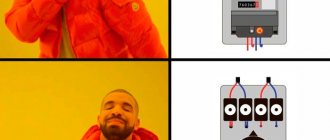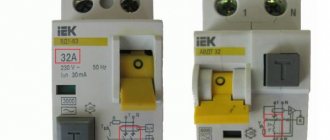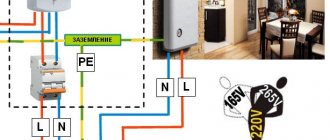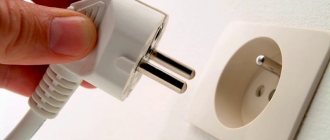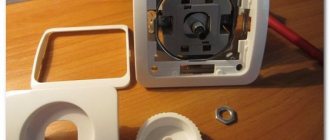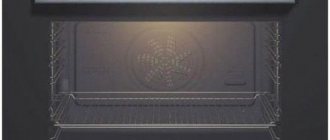The oven is most often used for preparing holiday dishes: cakes, baked chicken or “French meat”. And what a disappointment the hostess will be if, instead of a gala dinner, the oven prepared a completely different “dish” - it knocked out the plugs when turned on or during the cooking process. The situation is unpleasant, but it is not always a matter of equipment failure. In our material we will analyze the most typical cases in which an oven - built-in or as part of an electric stove - is knocked out by an automatic device or RCD.
We repair faults professionally
Repairing electric stoves at home is the direct specialization of our service. You can order a specialist over the phone. Contact our dispatcher, describe the problem that has arisen, and a specialist will come to you with all the equipment necessary for repairs and diagnostics. Our service center offers affordable prices, new repair tools, high-quality components for replacing broken parts, and experienced and qualified technicians. Diagnostics are carried out free of charge. We repair electric stoves from imported well-known manufacturers, as well as stoves from domestic manufacturers. An extensive component warehouse contains all the parts needed for replacement. The repair will be carried out as quickly as possible, since you will not have to wait for the necessary spare parts to arrive at the warehouse. Upon completion of the work, the technician will issue a guarantee directly for the repair itself, as well as for the replaced elements. With Mastersbyt, your kitchen assistant will delight your dear and beloved people with delicious dishes for a long time to come. You will find a lot of useful information about the intricacies of repair and maintenance of equipment in this section.
Why, when you turn on the oven in an electric stove, does the light turn off?
- Or the oven is shorting out. Or the connection is not correct. The oven puts a lot of load on the network and must have its own power line, with its own automatic machine.
- It doesn’t matter what kind of house you have - brick or panel. You have an electric stove, most likely with 4 burners and this is very high power, much more than the power of an oven. Therefore, if the stove itself is turned off and the electricity is turned off when the oven is turned on, the reason is simple: damage to the insulation on the wires, contact of two exposed wires and, as a result, a short circuit. – we have a short circuit again. In the first case, you need to replace the damaged wire, in the second, clean and attach the wire to the heating element.
- In this case there may be three main reasons.
- The oven itself is faulty, in other words, it shorts out, and accordingly the machine is triggered.
- The machine is not designed for the load that your oven creates when you turn it on.
- problems with connecting the oven, either poor contact or damage to the electrical wire in the oven.
- If the oven itself is working properly and the machine is designed for the load that is connected to it (This is not only an oven, but also other devices that are currently connected to this machine. For example, an oven, an electric kettle, and heating water in a washing machine can work on the machine at the same time and iron. With such a load, even a 25-amp machine is guaranteed to turn off), then all that remains is a malfunction of the machine itself. This happens, i.e. The machine no longer holds its normal current. The machine needs to be replaced.
- Most likely the problem is that your electrical lines are old and therefore simply cannot withstand such electrical voltage, you need to check, and it is better to change the wiring; this will allow all your electrical devices to work simultaneously without damaging each other.
- A normal phenomenon is that the wiring cannot withstand the load of a constantly working refrigerator, a just boiling kettle, and then - they turn on the oven and that’s it, the automatic machine that is placed at the entrance cuts off the electricity because it cannot cope with the load. I also have a panel, in my machine I wired separate sockets, separate kitchen sockets with a large load, a separate refrigerator, stove, oven for power, and a washing machine. This also had to be done after, when turning on a powerful kettle that suddenly plugged into the network, the machine switched off, the lights went out, and the washing machine was running.
- please tell me I have a stove with electric ignition when it is on. the light immediately turns off. What could happen?
- Apparently your automation is rather weak. But this is for the better, because... Apparently, you just need to change the cable feeding your stove. And only then install a more powerful machine gun. Something like that. Good luck!!!
- If, judging by the question, the stove is working normally and when you turn on only the oven the machine knocks out, then most likely there is a short circuit. Hence the protection is triggered. The power of the oven and the hob plates is basically the same and in theory the machine should (if the load is exceeded) also knock out when turned on stoves and (or) only ovens. And since it only knocks when the oven is running, then the problem is most likely in it.
- If all the burners do not switch off, but one oven does, it means that there is a short circuit in the electrical circuits, which triggers the protection to avoid unacceptable heating of the electrical wiring, which can even lead to a fire. The oven - for repair or to the landfill (depending on its general technical condition and your financial situation). If the oven is very old and bakes poorly, but your wallet allows it, replace it with a new, perfectly working modern oven that clearly maintains the set temperature, and if it also has convection, this is the dream of any good housewife and the joy of everyone at home - red hut not corners.
- If your house was designed with electric stoves, then the cable and circuit breaker must be installed accordingly. Then you need to look for the reason in the connection of the terminals of the stove or some kind of malfunction in the stove itself. If you have gas in your house, then you need to look at the control panel to see which machine has triggered and what its rating is. If 16 A, then such a machine is rather weak. This means that the wire is not designed for this load. It is necessary to throw a separate wire with a cross-section of 3x2.5 squares into the kitchen. Set the machine to 25 A. There is a light bulb in the oven, there were cases when the wiring to this light bulb shorted and it turned out to be a short circuit
During operation, an electric stove creates a significant load on the network, which places additional demands on the electrical wiring.
We will not describe them in detail here - your electrician should know this, whom you will still have to contact to check or replace the wiring. You may need to replace all of the old wiring. For greater reliability, we advise you to connect the stove to a separate outlet that is better protected from moisture. And under no circumstances should you use extension cords, adapters, or the like.
To avoid damage to the slab due to voltage surges, it is highly advisable to install an RCD. At the same time, remind the electrician when he installs or changes the RCD so that the type of RCD is selected correctly and its power is calculated. For greater reliability, it is better to install a separate RCD for the electric stove, as well as separate wiring in general.
This is a classic: you turned on all or almost all energy-intensive devices at once - and then your traffic jams were knocked out. In this case, I think, advice is not needed.
In case of any short circuit, the RCD will be knocked out, and the power wire is one of the most vulnerable links in the stove circuit: it can be pinched or damaged. To check the power cord, you need to “ring” it with a multimeter: if you don’t have one, you’ll have to call a technician.
READ MORE: What should the slope of the sewer pipe be and why is it important?
Problems with the socket
In principle, to check the socket, you need to plug in another device with comparable power, but few household appliances can compare with an electric stove in terms of power consumption: however, you can try, for example, an iron: if the plugs come out again, then the problem is in the socket, internal wiring or automatic RCD. Start with the socket, as it is more accessible for self-repair: we won’t write here how to repair it.
Any damage to the internal wiring of the electric cooker may cause a short circuit. There are a lot of wires in the stove, and in order to accurately determine the problem area, you need to “ring” them all, that is, disassemble the entire device: it’s hardly worth undertaking this yourself.
As with internal wiring, oxidation of any electrical connections can cause a short circuit with associated consequences. There are a lot of buttons and terminals in the plate, a lot - it’s better to call the workshop.
The power cord is connected directly to the surge protector, and any damage or loosening of the contacts in it will lead to a short circuit and “flying out” plugs. It cannot be repaired - only replaced, and then decide whether you will undertake it yourself, or whether you will not risk yourself and the stove, and trust an experienced craftsman.
Breakdown of the heating element
A short circuit can cause a breakdown of one of the slab components, for example, a heating element. Under conditions of constant heating, the heating element is highly susceptible to corrosion, and this provokes its destruction and breakdown.
A faulty heating element must be replaced, otherwise there is a risk of receiving a strong electric shock.
In principle, you can replace the heating element yourself, but it is better to play it safe and entrust such an important operation to a professional.
Mechanical damage and moisture on the contacts can cause a short circuit in the control module, as in any other element of the stove.
Of course, only a qualified specialist can accurately determine that a faulty control unit is to blame.
And an unprepared person should definitely not get into it: the consequences will be fatal, including possible breakdowns of other expensive components of the electric stove. Usually the control module is changed or reflashed.
When the oven is working properly
If the plugs in your apartment are knocked out when turning on or heating the oven, first conduct an independent inspection. Perhaps there is no breakdown as such, but the reason lies in:
- Malfunction of the plug, cord or socket . Carefully inspect them for damage (traces of melting, creases, etc.). If you find any problems, contact an electrician.
- Incorrect connection . Like electric stoves, ovens for safety reasons must be connected to a separate line with grounding and its own automatic circuit breaker. Unfortunately, quite often this rule is neglected - especially if the house has a gas stove and an electric oven and the wiring for the oven was not initially provided. If the cable or machine is not designed for the power of the oven, the network will experience an overload and the plugs will “fly out”. The second, no less common option is incorrect connection of the plug in the terminal block. The ground contact should not be connected to the phase, as this will lead to a short circuit. When connecting yourself, be sure to check the markings of the wires and consult the installation manual. Better yet, turn to professionals. This will protect you and your home, maintain the warranty of the appliance if it is new, and ensure that the oven operates properly.
- Breakdown of a machine, RCD or automatic device . Like any equipment, electrical protection devices fail. The faulty device must be replaced with a new one.
- Faulty electrical wiring from the oven to the distribution panel. Usually the problem occurs in apartments with old wiring. A short circuit occurs due to cable wear. In this case, repair or replacement of the wiring is required.
Fan
The second is to check the fan, and checking it is elementary. It starts working even if the heating element is not turned on; it usually turns on when the light in the hob is turned on. So - if you turn the knob to turn on the light, and immediately or after a few seconds the plugs go out, then this means that it is the fan that is faulty.
You can disassemble the back wall and look inside; there are cases when it “shorts” to the housing (for example, some supply wire has melted). Then you will immediately see “black” spots on the fan housing or on the oven itself. They need to be isolated! And try to start it again, if your machines break again, it means the fan motor itself is faulty and needs to be changed.
Why does the RCD trip?
When the boiler is turned on, the RCD may trip, or the automatic device may turn off the electricity in the entire house. Let's figure out why the RCD periodically or constantly trips on a home water heater:
- When a simple circuit breaker or differential circuit breaker is triggered, the cause may be a short circuit inside the boiler or in its wiring, or a network overload (if there are a lot of electrical appliances in the apartment). Dowels with shelves and mirrors may be driven into the wall, violating the integrity of the electrical wiring.
- An important role is played by the correct selection of RCDs based on rated current and leakage current. If the device is selected incorrectly, it will trigger frequently.
- When the RCD is disconnected, the cause may be a violation of the integrity of the heating element or wiring inside the heater, leading to electric current leakage onto the boiler body. If there is a ground loop in the outlet, the power is immediately turned off. In the absence of grounding, the device turns off after a breakdown of current from the housing to a person.
- Incorrect connection of the RCD in the electrical panel. If the work was done by a non-professional, then there is a possibility of an error. Sometimes the ground is connected to the zero, which causes the device to trip.
- Malfunction of the shutdown device itself. The test button may stick or the switch may have mechanical defects. In this case, the slightest vibration will trigger it. In Thermex heaters, the protective device is often faulty due to its poor quality.
- Sometimes a shutdown occurs after a period of time and heating of the water. The reason may be a slight deformation of the boiler body and its contact with the “phase”.
Power circuit breakers
Equipment malfunctions are often accompanied by failure of electronic components operating under voltage. Symptoms of a breakdown can be different: unstable operation and spontaneous shutdown of the device, the smell of burnt wiring (plastic), the appearance of clicks and sparks. If the wiring is damaged, current can flow through the metal body of the device, which poses a serious threat to the health and life of the owner. To protect users, power circuit breakers are provided for each connection line.
There are a large number of protective devices that respond to electrical equipment failures. They are triggered by a short circuit or by detecting alternating and pulsating leakage currents. Automatic circuit breakers (circuit breakers) instantly disconnect the line in the event of an overload. Residual current devices (RCDs) disconnect the circuit when a current difference is detected in the phase and neutral conductors. The difference is a signal that part of the current goes to the ground or to the protective conductor. This may indicate a violation of the integrity of the wiring or a breakdown of the equipment connected to it.
Automatic switches controlled by differential current (difavtomats) are the most complex and multifunctional devices. They provide comprehensive protection against current leakage, short circuits and network overloads. To ensure reliable protection of a person and his home, as well as wiring and household appliances, circuit breakers must be installed for each powerful consumer (refrigerator, hob, oven, water heater, washing machine and dishwasher). This disconnection will reduce the risk of failure of all devices if a short circuit occurs in one of them.
The stove goes out after turning on the oven, fix
It happens that the hob of an electric stove works quite well, but immediately goes out as soon as the oven turns on. There are not many reasons for this behavior of the equipment, and I will talk about all of them below.
Simply put, the oven shorts out, which knocks out the machine, and therefore the entire stove does not work. The reasons for a short circuit can be different and more on this below. If this happens, the device is immediately disconnected from the network. Next, you need to check the wiring for damage.
This leads to the contact of the contacts with each other or in a certain area with the metal parts of the housing. It is necessary to restore the insulation or replace the wires. For a complete check, it is worth inspecting the condition of the insulation and the contacts of all wires, including the power switch and backlight socket.
Most often, during long-term operation, a burnt-out phase wire comes off the heater. It comes into contact with the metal case, as in the previous case, this leads to a short circuit. The solution is to strip and fix the wire to the heating element. It makes sense to check all the wires going to the oven heater to avoid a recurrence of the problem.
Additionally, you can check the heater itself for breakdown; perhaps it itself is damaged. In practice, it happens that the cause of problems is improper storage of equipment. If condensation gets on the heating elements and they are wet, the stove will turn off. Usually the heaters are dried by turning on the device for about five hours.
Electronic filling with control functions is an integral attribute of almost any electric stove. If there is a fault, this also leads to a short circuit. Repair comes down to replacing the old module with a new one, which should be entrusted to a specialist.
The environment around the device is also full of electrical things that can break down under certain favorable circumstances.
A familiar picture is observed here - when you turn on the oven, the machine knocks out and the entire device does not work. The problem can be much broader: incorrect connection of the plate, especially the terminals, incorrectly selected power cable. It makes sense to check exactly how the equipment is connected using the instructions in the operating instructions.
note
When everything is normal in this part of the installation, you need to install a more powerful machine. Although this does not always help, electrics are still a delicate thing.
You may have to install separate wiring, since the old one, in terms of material and cross-section, does not match the power of the device, and install an additional circuit breaker for the stove.
A more powerful device does not always save you; in addition, under other circumstances, such a step can lead to dire consequences. In general, it all depends on the situation. Contact a qualified electrician.
I note that sometimes even the most powerful switch reaches its service life and ceases to hold its normal current. Here, too, only replacement will save you.
READ MORE: Why do LED lamps heat up and is it dangerous?
Leakage current
Current leakage cannot be ruled out. This point can be checked. The total leakage current almost always triggers the machine, causing the stove to refuse to work.
There are three possible options:
- if the leakage current is higher than 16 mA (let me remind you that in everyday life it often happens that the minimum disconnecting differential current on the RCD with the installation is designed for 30 mA), you need to dig towards the faults of the oven itself, which I mentioned above;
- there is a current below 1 mA - without further ado we change the machine;
- if 5-10 mA, you need to sort out the oven and change the RCD.
In such a situation, three options emerge: either a complete overhaul of the stove with the help of a professional electrician, or its replacement (if the warranty has not expired), or a direct route to an official service center.
I don’t advise you to joke with electricity - if after turning on the oven the entire stove turns off, measures must be taken immediately.
I note that among the whole heap of possible causes, the most common source of problems is bad contacts, poor connection, damage to the power cord, broken ground wire, etc. This is where you need to steer first.
It happens that circuit breakers for electrical wiring in a private house or apartment are knocked out. Most often this happens in winter or summer, and the off-season is considered the most emergency-calm time.
In winter, the main cause of problems is the inclusion of too powerful electric heating devices, and in summer - an increase in energy consumption by household appliances, increased humidity and air temperature, and power supply voltage drops characteristic of this time of year.
In this article we will try to explain what to do if plugs (plug electrical fuses), circuit breakers (circuit breakers), RCDs (residual voltage cut-off devices for current leakage from a phase wire) or difavtomats (differential circuit breakers) blow out in your apartment or house.
This publication is primarily intended for non-professionals in electrical network maintenance and contains only the most general recommendations.
First and most important: if you have knocked out old type plugs with bugs, do not reinstall them, not only for safety reasons. Repairing any modern equipment included in a faulty network can cost much more than buying several automatic plugs.
Go to section: Panel equipment
Secondly, before looking for the reasons for the operation of circuit breakers, you must turn off everything that is plugged into the sockets or through standard switches.
Trial switching on and off are carried out only on de-energized wiring sequentially: first we turn off the general circuit breaker, then we remove the plugs from the sockets and turn off the switches.
Important
If you need to check any device or lamp, first plug it into an outlet and only then turn on the machine. Follow this procedure each time until the problem is identified or until you check everything.
Third, to check the presence of voltage in the apartment during a test run and not risk expensive equipment, use a tester.
View the tester on the website
Most often, the automation is mounted next to the electric meter on the power switchboard.
If you have very old plug protection, the power distribution board may be poorly installed, but next to it you will always find a distribution box from which wiring branches radiate throughout the rooms.
Attention: under no circumstances should you open the box unless you are an electrician! You will have to look for the source of the malfunction by testing.
If you have a modern system, the search begins with sorting through the wiring branches. As a rule, they are switched on through separate circuit breakers with lower currents than the main one. In this case, the search begins by turning off the branch machines and, after finding the faulty branch, the trial switching method is used.
If apartment meters are located on the landing, it will be more difficult to find the reason for the protection triggering, because There will be a ShchA in the hallway.
In most cases this happens for the following reasons:
- Overloaded wiring - in this case, the plugs or the machine constantly knock out. It is necessary to check whether their rated current corresponds to what is actually consumed, and the amount of actual consumed current corresponds to the power consumption rate;
- Overloads due to fluctuations in network voltage or when turning on devices with high energy consumption;
- Instant overloads due to the launch of powerful appliances with motors, for example, a refrigerator;
- Current leakage through the phase wire knocks out the RCD. For example, when turning on a boiler, washing machine and other appliances in wet rooms;
- If the RCD or circuit breaker is knocked out and they do not turn on, then most likely a short circuit has occurred. This usually occurs due to a malfunction of some device or wiring, for example. In very rare cases, this is a malfunction of the circuit breaker itself;
- The refrigerator consumes 0.1-0.5 kVA, but at the moment of startup, the current consumption can increase by 5-7 times.
- The current consumption of a washing machine is approximately the same as that of a refrigerator, incl. launcher But if it is not the current protection that has tripped, but the RCD, then the problem is most likely not in the refrigerator, but in the washing machine.
- 50 l boilers consume 1.2-1.5 kVA; 100-150 liter - 2-3 kVA. Water heaters are the second most common source of RCD activation.
- Current protection usually does not work on a computer and flat-screen TV, but an RCD may work.
- The microwave and the air conditioner consistently need approximately the same amount of energy - 1-2.5 kVA, but the starting current of the air conditioner is 2-3 times higher than the operating current.
- The standard power of a steaming iron is 2.2 kVA.
- The vacuum cleaner consumes about 1.2-1.6 kVA, but its starting power is 2-3 times higher. In some cases, during operation, power consumption may increase to the starting power.
- A tabletop electric stove has the same power consumption as an iron, while a stationary stove with an oven will require 6-10 kVA.
First of all, you need to look at what was turned on at the time of knocking out and whether there was too much power.
If there was, you need to turn off one of the devices. By the way, it is advisable that devices with high energy consumption be connected to different machines.
READ MORE: Standards for mounting distances for air ducts: calculation of geometric data of the ventilation route
The only way to determine why an RCD is triggered without special devices and professional education is an electric meter with ground and reverse indicators.
If “Ground” lights up when the RCD is triggered, this is a leak; if “Reverse” – reactivity. The main thing is not to confuse emergency indicators with optical ports of multi-tariff meters.
Short circuit
If, after turning off all the devices, the machine still does not work, you can check the wiring for a short circuit using a “makeshift” method: take any telephone charger with an indicator (IMPORTANT: without a phone connected to it) and plug it into the socket, then turn on the machine. If the charging indicator blinks even a little, the machine itself is most likely faulty, but if the indicator does not work, it is most likely a short circuit or a broken wiring.
It is not necessary, but it is advisable to supplement your input panel with a voltage relay, [PICTURE] which de-energizes the wiring when the permissible network voltage goes beyond the limits.
Recently, the problem of the neutral wire burning out due to overvoltage is especially relevant, because Our apartments have become oversaturated with powerful technology.
The wiring ends up under voltage of over 300 V, and this is not only deadly, but also leads to the burning of expensive equipment.

